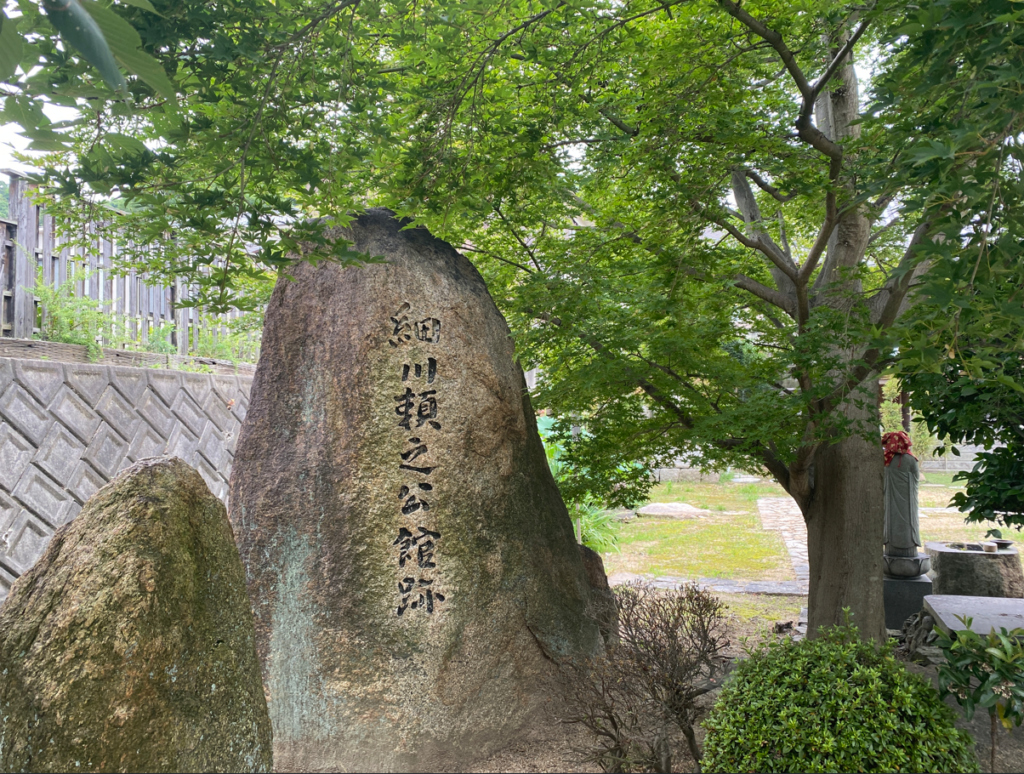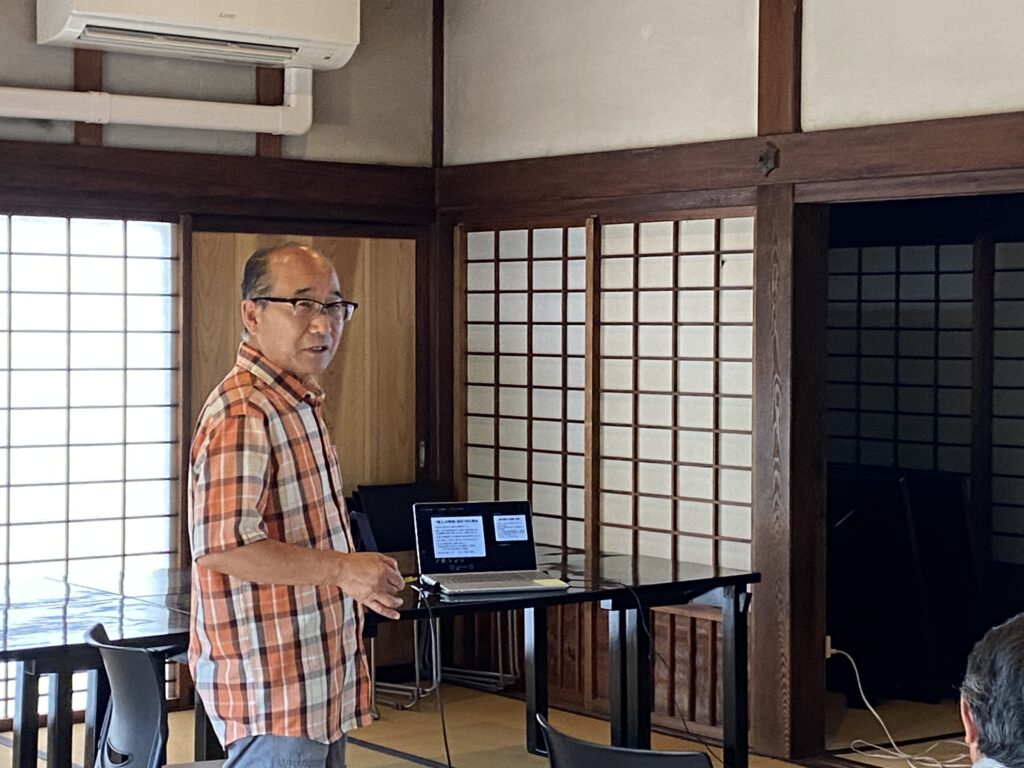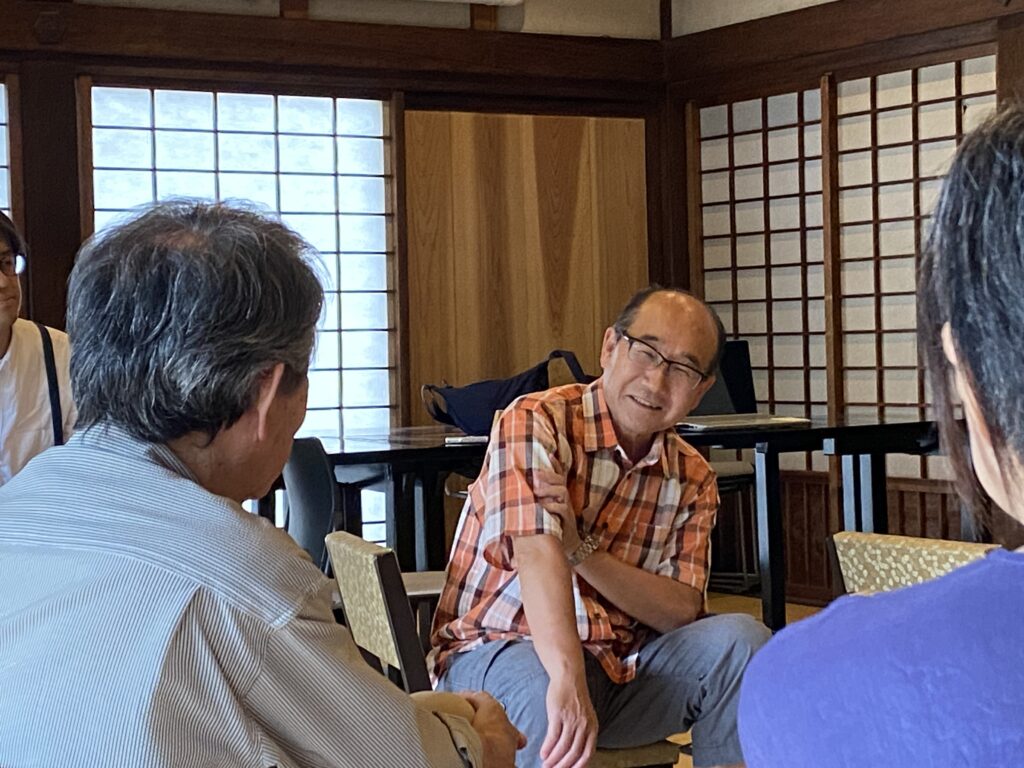朝廷が南北に分かれ、50年以上にわたる内乱が続いた室町南北朝時代。
そんな南北朝の統一を果たした第3代将軍足利義満を支えたのが、
筆頭補佐官(管領)だった細川頼之でした。
During the tumultuous Nanboku-chō period (1336–1392), when the Imperial Court was divided between the Northern and Southern Courts, Japan was embroiled in civil war for over 50 years.
The man who played a pivotal role in reunifying Japan under the Muromachi shogunate was the third shogun, Ashikaga Yoshimitsu. And the person who supported Yoshimitsu as his chief advisor (Kanrei) was none other than Hosokawa Yoriyuki.

義満を支え、室町幕府の基盤を固めた頼之ですが、実は一時失脚し、
その時期を宇多津で過ごしていたと言われています。
このコラムでは、そんな細川頼之と宇多津の関係についてご紹介していきます。
話してくれたのは宇多津町文化財保護協会の畑元(はたはじめ)さん。
頼之ゆかりの場ともいわれている圓通寺(えんつうじ)で、その歴史を振り返ります。
However, despite his crucial role in stabilizing the shogunate, Yoriyuki was temporarily exiled—and during that period, he is said to have lived in Utazu.
In this article, we explore the deep connections between Hosokawa Yoriyuki and Utazu, guided by insights from Hajime Hata of the Utazu Town Cultural Heritage Preservation Society. Our discussion takes place at Entsū-ji Temple, a site believed to be closely linked to Yoriyuki.

(講義参加者)
瀧川 宏志 宇多津町文化財保護協会
童銅 啓純 圓通寺住職
玉井 幸絵 (株)ちいおりアライアンス、宇多津古街ガイド
Speakers
- Hiroshi Takigawa(Utazu Town Cultural Heritage Preservation Society)
- Keijun Dōdō(Chief Priest of Entsū-ji Temple)
- Yukie Tamai(Chiiori Alliance, Utazu Historic District Guide)
頼之ってどんな人?
畑さん
頼之は1329年に尾張国(現在の愛知県)で生まれ、
鎌倉時代から続く有力な武家である細川家の嫡男として育ちました。
頼之のターニングポイントとなったのは、1362年の白峰合戦。
この戦いで従兄弟の清氏を討った功績が認められ、頼之は讃岐国と土佐国の守護に任命されます。
その後、頼之は管領(将軍を補佐し政務全体を統括する役割)に任命され、
足利義満とともに12年間京都で過ごします。
しかし、京都を追放され、守護を務めていた宇多津に戻ることになりました。
宇多津で10年余りを過ごした後、再び義満に呼び戻され、1392年に京都で亡くなりました。

宇多津文化財保護協会作成 頼之年表より
玉井さん
南北朝が始ったのが1336年、終了したのが1392年なので、頼之は南北朝と共に育ったと言えますね。
管領は将軍に次ぐ最高の役職ですが、なぜ頼之は管領になることができたのですか?
畑さん
理由はいくつかありますが、
細川氏は足利氏と適度な距離感の一族だったこと、
佐々木道誉などの強い後押しがあったこと、
頼之の妻が義満の乳母であったこと、
などが主な理由として挙げられます。
瀧川さん
頼之とその妻が、義満の育ての親だったとは!
それは強い結びつきですね。

畑さん
そうなんです。
そうして管領になった頼之は、
それまでは不安定だった将軍の地位を確立し、
倹約令の制定や半済令の施行などを執り行い、まだ幼かった義満を支えました。
しかし、康暦の政変(1379年)で失脚し、守護地である四国に帰ることになりました。
Who Was Hosokawa Yoriyuki?
A Prominent Samurai from a Distinguished Family
- Born in 1329in Owari Province (modern-day Aichi Prefecture)
- The eldest son of the Hosokawa clan, a powerful samurai familywith roots in the Kamakura period
- His turning pointcame in 1362 during the Battle of Shiramine, where he defeated his cousin, Hosokawa Kiyouji
- In recognition of this victory, he was appointed Governor (Shugo) of Sanuki and Tosa Provinces
Rise to Power as Kanrei (Shogunal Chief Advisor)
- Later, Yoriyuki was appointed Kanrei, the highest-ranking official after the shogun
- He spent 12 years in Kyoto, governing alongside Ashikaga Yoshimitsu
- However, in 1379, he was forced to resigndue to political upheaval (the Kōryaku Coup)
- Yoriyuki returned to Utazu, where he remained for over a decadebefore being recalled to Kyoto
- He passed away in 1392, the same year that Nanboku-chō unitywas achieved
Why Was Yoriyuki Chosen as Kanrei?
Hata-san:
There were several reasons for this:
- The Hosokawa clan had a balanced relationship with the Ashikaga family—neither too close nor too distant.
- He had strong backing from Sasaki Dōyō, a powerful political figure of the time.
- His wife served as the wet nurse of Ashikaga Yoshimitsu, creating a deep familial bond.
Takigawa-san:
So, both Yoriyuki and his wife were essentially foster parents to Yoshimitsu? That must have forged a strong connection.
Hata-san:
Absolutely. As Kanrei, Yoriyuki solidified the shogun’s authority, introduced austerity policies, and implemented the Hanzei decree, which allowed warriors to collect half of the taxes from certain lands. These reforms helped stabilize the government during Yoshimitsu’s early years.
However, in 1379, political rivalries led to the Kōryaku Coup, and Yoriyuki was banished from Kyoto.
頼之、宇多津に戻る
畑さん
失脚した頼之は京都の屋敷を焼き払い、一族・家臣と共に守護地四国の宇多津に向かいます。
頼之が讃岐に帰る際に詠んだのがこの「海南行」という漢詩です。
※海南行より
人生五十 功無きを愧ず
花木春過ぎて 夏已に中ばなり
満室の蒼蠅 掃えども去り難し
起って禅榻を尋ねて 清風に臥せん
※海南行 (宇多津町文化財保護協会 畑 元 口語訳)
「人生50年」という。自分はもうそれを過ぎたのに、これといった功績もなく、恥ずかしい。花や木も春の季節を過ぎて、夏の半ばにさしかかっている。うるさい青蝿どもが、いくら追っ払っても又やって来る。仕方がないから、立ち上がって、部屋を出て、長座禅椅子でも探し、清らかな風に吹かれて横にでもなるか。
諸大名との派閥抗争などに辟易した頼之が、
この「清風に臥せん」(座禅の椅子で横になる=気楽に過ごしたい)の地として選んだのが、
ここ圓通寺の付近という説があります。
他にも本妙寺や岡屋形、長縄手の説があり、
はっきりとは分かっていません。
玉井さん
ですが、坐禅を組んだということはやはり、禅寺の近くだったということでしょうか。
畑さん
そうですね。
圓通寺の付近には、昔はお寺が30以上並んでいたという説もあるので、
宇多津の青の山のふもとで、場所を移しながら過ごしていたのではないでしょうか。
Yoriyuki’s Return to Utazu
After his exile, Yoriyuki burned down his Kyoto residence and withdrew to his governorship in Shikoku.
Before leaving, he composed a Chinese-style poem titled Kainan-kō (海南行), which reflected his disillusionment with political strife:
Excerpt from Kainan-kō
“A man’s life is said to be fifty years. I have already surpassed this, yet I have accomplished nothing—how shameful.
The flowers and trees of spring have faded, and summer is already halfway through.
Annoying blueflies keep swarming, no matter how much I try to drive them away.
Perhaps it’s time to leave my chamber, find a meditation seat, and lie down in the cool breeze.”
This phrase “lie down in the cool breeze” is believed to symbolize Yoriyuki’s retreat to a place of tranquility—a location many believe to be Entsū-ji Temple in Utazu.
Where Did Yoriyuki Spend His Exile?
Tamai-san:
If he practiced meditation, would that mean he stayed near a Zen temple?
Hata-san:
Most likely. Utazu’s Aonoyama foothills were once home to over 30 temples, so it’s possible he moved between several locations.
Some historians argue that he may have resided at:
- Entsū-ji Temple
- Honmyō-ji Temple
- Okayakata (a fortified residence)
- Naganawate (a defensive area of the town)
However, there is no definitive answer.
細川頼之と宇多津② につづく
To Be Continued…
Stay tuned for Part 2, where we further explore Yoriyuki’s influence on Utazu and the legacy he left behind.